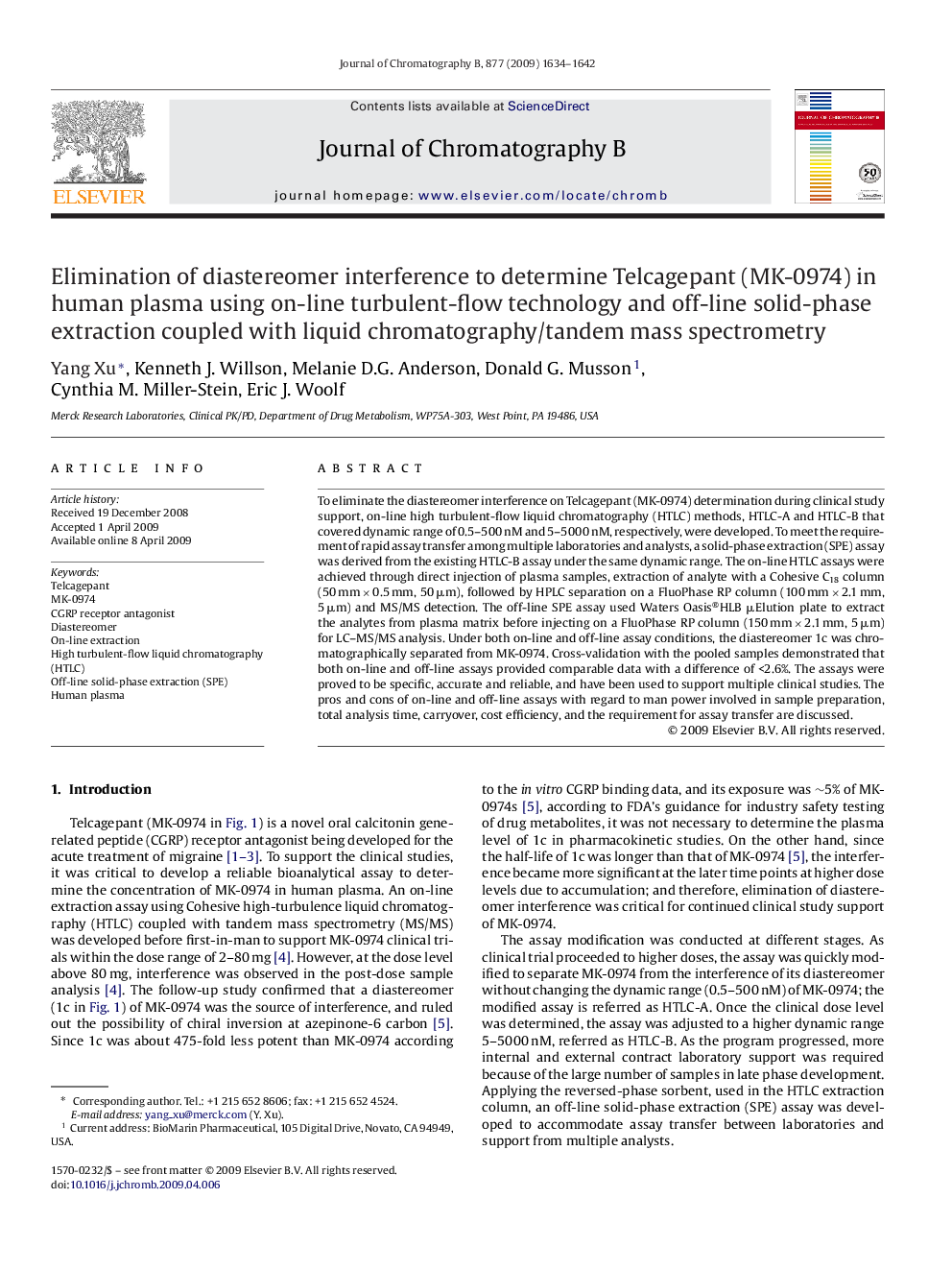| Article ID | Journal | Published Year | Pages | File Type |
|---|---|---|---|---|
| 1216140 | Journal of Chromatography B | 2009 | 9 Pages |
To eliminate the diastereomer interference on Telcagepant (MK-0974) determination during clinical study support, on-line high turbulent-flow liquid chromatography (HTLC) methods, HTLC-A and HTLC-B that covered dynamic range of 0.5–500 nM and 5–5000 nM, respectively, were developed. To meet the requirement of rapid assay transfer among multiple laboratories and analysts, a solid-phase extraction (SPE) assay was derived from the existing HTLC-B assay under the same dynamic range. The on-line HTLC assays were achieved through direct injection of plasma samples, extraction of analyte with a Cohesive C18 column (50 mm × 0.5 mm, 50 μm), followed by HPLC separation on a FluoPhase RP column (100 mm × 2.1 mm, 5 μm) and MS/MS detection. The off-line SPE assay used Waters Oasis®HLB μElution plate to extract the analytes from plasma matrix before injecting on a FluoPhase RP column (150 mm × 2.1 mm, 5 μm) for LC–MS/MS analysis. Under both on-line and off-line assay conditions, the diastereomer 1c was chromatographically separated from MK-0974. Cross-validation with the pooled samples demonstrated that both on-line and off-line assays provided comparable data with a difference of <2.6%. The assays were proved to be specific, accurate and reliable, and have been used to support multiple clinical studies. The pros and cons of on-line and off-line assays with regard to man power involved in sample preparation, total analysis time, carryover, cost efficiency, and the requirement for assay transfer are discussed.
